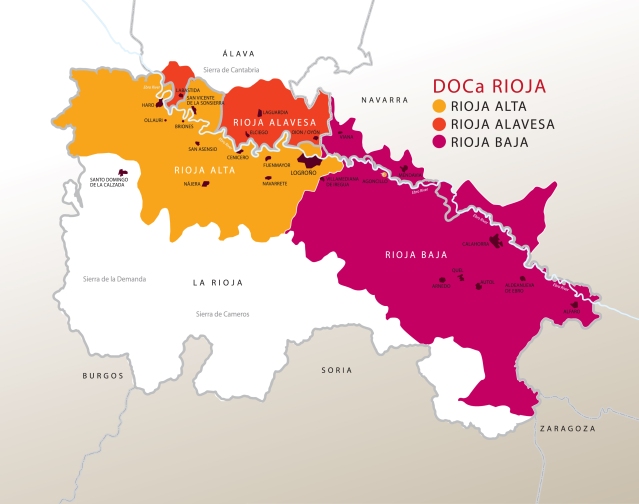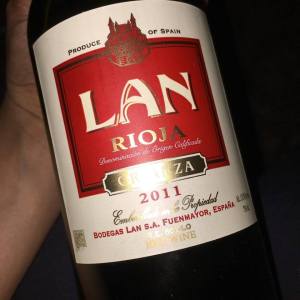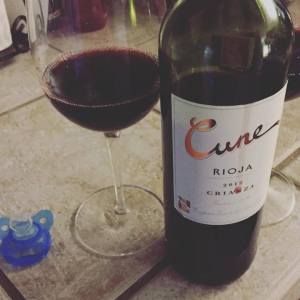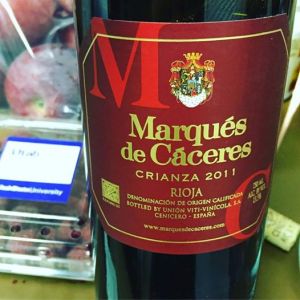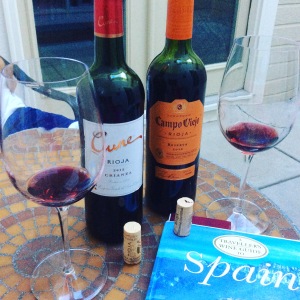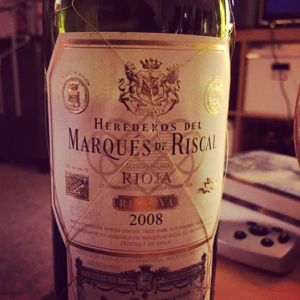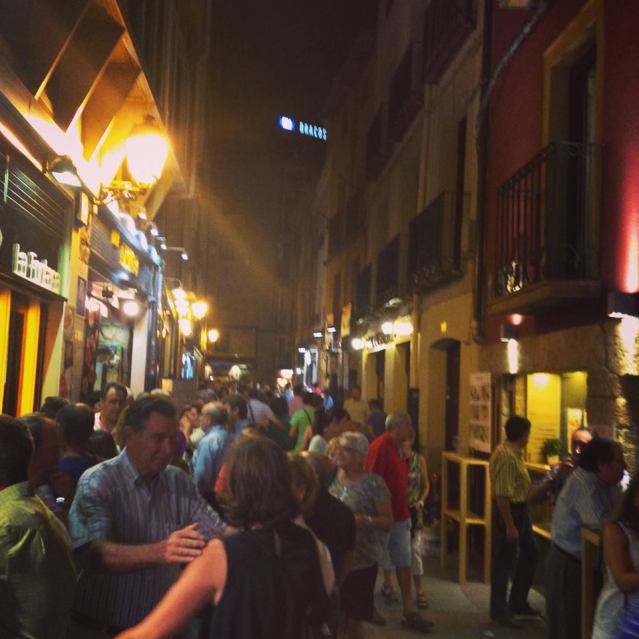My Top Go-To Rioja Wines Under $20

Finding Rioja wine in your local stores isn’t as hard as most people think. Having lived in Rioja for two years and having completed a Masters of Viticulture and Enology (winemaking) there, this place is my second and favorite home. I am often asked what my “Go-to” Rioja wines are, and I have a few recommendations for a few favorites that you are likely to find in your store.
Let me first explain something about the wine regions of La Rioja, Spain.
The Regions of La Rioja
La Rioja has three wine regions where wines of varying styles are made. The Rioja area is subdivided into three different regions – Rioja Alavesa, Rioja Alta and Rioja Baja. While la Rioja Alavesa and la Rioja Alta are located closer to the mountain, they are at slightly higher elevations and have a cooler climate. This results in wines with more acidity and slightly more finesse and elegance.
La Rioja Baja is located to the southeast where it is drier and warmer. The annual rainfall in the region ranges from 12 inches in parts of Baja to more than 20 inches in La Rioja Alta and Alavesa.
Although each winemaker adds their own special touch, terroir is not something that can necessarily changed. If I want a lighter, more distinguished wine, I tend to lean towards wines from Rioja Alta or Rioja Alavesa. These two areas, of higher altitude, are located in the northernmost part of La Rioja near Basque Country (if not in it). If I want a slightly bigger-bodied wine, I lean towards wines from Rioja Baja, where there is a bit more sun and slightly different soil types dominate.
Aging and Oak
I also then consider how much aging or oak I would like on my wine. Rioja has a great classification standard that helps you understand how much long your wine has been aged; based on your tastes, this classification standard can help determine the right wine for you.
I love a Cosecha wine (a wine in its first or second year with little to no oak; it has a green label) for summertime due to how light and refreshing it is. However, my go-to night wine is generally a Crianza (12 months+ in oak plus one year in bottle; it has a red label). I reserve Reserva (aged minimum of three years, tends to be 18-24 months in oak with the rest of the time in bottle) for those nights when I am having a hearty meal with friends. These classifications, while made to be easy to understand, can be at times confusing. Some winemakers who chose to age a wine for 8 months, for example, based on the grape variety, terroir, vintage, etc., still have to use a Cosecha, or green. label.
In general, I stick to Crianza and Reserva unless it is a white wine. For a white wine, I prefer the wine of the year or the Cosecha wine.
Here are a few of the wines that can easily be found in your grocery or liquor stores with a cost likely under $20. If you are lucky, you may even find them for under $15 on sale.
LAN Crianza or Reserva
C.V.N.E. Crianza
Marqués de Cáceres Crianza
Campo Viejo Reserva
Marqués de Riscal Reserva
While I haven’t listed vintage, the wines currently released onto the market are ready to drink. Unlike their US counterparts, there are strict rules as indicated by the labels and by the Regulatory Council in Spain that prevent wine from being released before it has been properly aged. You generally can’t go wrong with the suggestions listed above. If you are interested in specific vintages, click here for the listing of the vintages.
The majority of the wineries listed above have been making wine since the 1900s and have vines close to 100 years old. Most are still held by the families who started the wineries back in the 1800s, and all have had a very high standard in winemaking for some time.
The wines listed above are also wines made with the traditional grapes grown in the region: Tempranillo, Garnacha, Graciano, Mazuelo and Maturana Tinta. These wines tend to be elegant and subtle yet powerful in the mouth. To me, they bring me back to my time in La Rioja where I ate and drank with friends on Calle Laurel, the famous tapas street of Logroño.
These Rioja wines have an earthy, dark cherry, tobacco mouth taste that conjures up all the sights, smells, and sounds of this amazing town. To me, they are special, and every sip I take brings me back to those times. While they may not do the same for you, I hope that you will visit La Rioja and have a chance to experience what I have loved so much about this region. It’s not just about the food and wine but about the people behind the wine that make it so special.
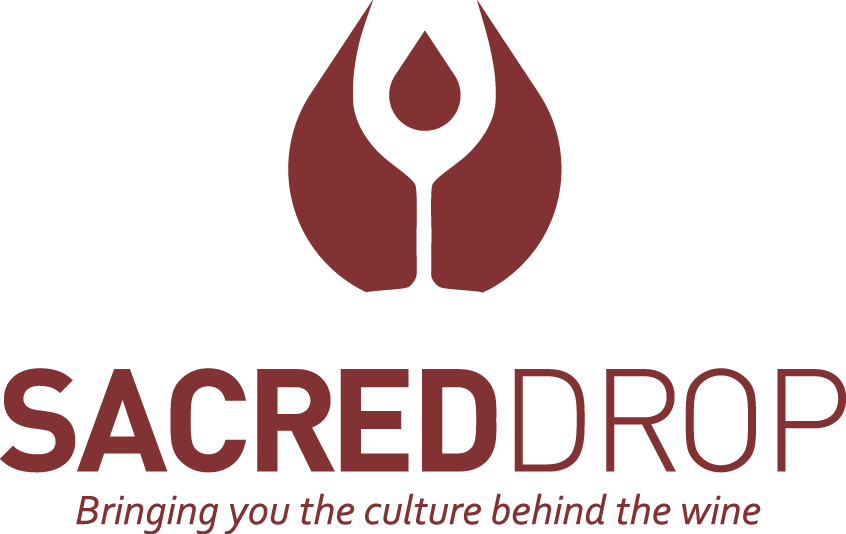 Sacred Drop
Sacred Drop 